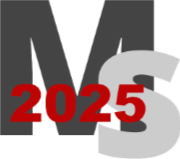This approach separates content from presentation in a way that benefits everyone involved in the web development process. Content creators can focus on the substance of their message without getting distracted by formatting concerns. Designers can ensure visual consistency without having to manually review every piece of content. Developers can build maintainable systems that scale gracefully as content requirements evolve.
The structured content starter demonstrates these principles in action through a component-based architecture that makes complex layouts approachable and maintainable. Rather than asking content creators to learn markup languages or template syntax, the system provides a clear configuration interface that handles the technical details automatically.
